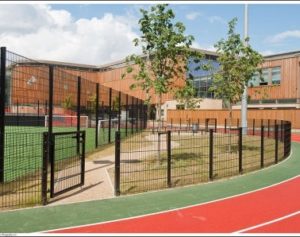School Fencing Tips – Part Three
School fencing and gates are a big concern for parents and school staff. This quickly became apparent upon the number of readers’ comments I received with our first two blogs. One of the most prevalent themes was the use and care of gates. Many of the parents brought up some very valid concerns regarding the use, placement and care of gates relative to their children’s safety. Below are some of the most relevant concerns that school officials and architects designing school facilities with fencing.
- The location of gates. School officials should consider the location of gates relative to where children will be playing. Large rolling and swing gates are necessary to access playgrounds and ball fields for maintenance. However, these large rolling and swing gates represent a significant liability to small children. These gates should not be located where children often play. A service point of entrance should be considered along the perimeter of the site.
- Access of gates. All gates should be locked. Access and service gates should be locked at all times and often checked. Rest assured, school officials check all building doors at the end of each day. Why wouldn’t they check all perimeter and service gates? Gates that are frequently used should be equipped with permanent locks that are dependable and cannot be removed. It is easy for padlocks to be removed and often never replaced.
- Safety signage. All gates should be equipped with safety signage that warns others of potential pinch points. This is a great educational piece for school officials to use in educating children about the hazards of using gates.
As school officials begin to understand the importance of perimeter security of today’s schools; we will see more fencing and gates. Our fence industry professionals should join them in assuring these fences and gates are both secure and safe. We are looking forward to the challenge. 
